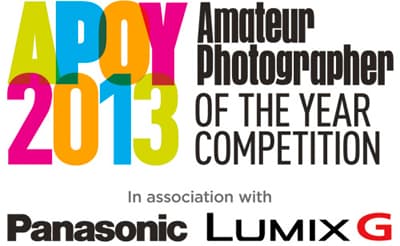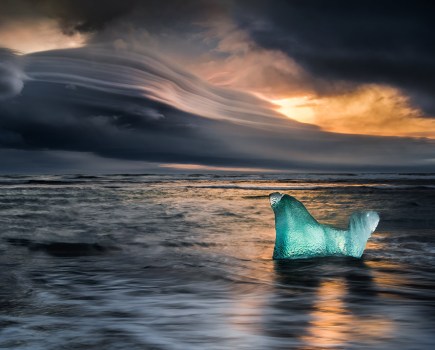APOY 2013 – Round Three – Animal Kingdom
Please visit the APOY 2013 home page to find all the rules for entry, terms and conditions, the APOY ENTRY EMAIL ADDRESS, and the disclaimers that must be copied and pasted into an email entry.
Entries must be received by 5pm on 26 April 2013
Round 3 of this year’s Amateur Photographer of the Year competition, sponsored by Panasonic, is The Animal Kingdom (wildlife and pets). The animal world is a popular subject for photographers, and with good reason. Flick through any book of wildlife photography and you’ll see how truly diverse nature can be. The animal world offers us countless textures, colours, shapes and modes of behaviour. All these things can be turned into photographic gold. But you may not even need to venture out into the wild. Even your own beloved pet can make a great subject.
 Photo by Bruce Jones
Photo by Bruce Jones
We have thousands of pounds’ worth of fantastic camera equipment up for grabs, as well as the chance to be crowned Amateur Photographer of the Year 2013. The closing date for round 3 is 26 April 2013. First prize is a Panasonic Lumix DMC-G5 plus Lumix G Vario 14-42mm f/3.5-5.6 Asph Mega OIS and Lumix G Vario 100-300mm f/4-5.6 Mega OIS lenses worth a total of £1,451.98. Second prize is a Panasonic Lumix DMC-FZ62 worth £373.99. Third prize is a Panasonic Lumix DMC-LZ20 worth £170.99. That’s a fantastic prize package worth £1,996.96! The top 30 photographs will be published in our 25 May issue, while the scores from the top 50 images will be posted on our website.
How to enter
Please visit the APOY 2013 home page for information explaining how to enter. Please use your full name as the file name and paste
the disclaimer into the body of your email if you are sending your entry to us
electronically. We also need to know where and how you took your image, plus
the camera and lens used with aperture and focal-length details. Remember to
include a telephone number and your postal address so we can contact you if you
win.
What makes wildlife such an appealing subject for photographers? Perhaps the answer lies in the stunning diversity that the natural world has to offer us. The animal world is such a rich source of fascination that many of us cannot help but be seduced by it. Take a look back through some of our Photo Insight columns with Jim Brandenburg and you’ll soon see how nature can inspire an almost childlike sense of wonder. Yet despite it’s popularity, wildlife photography contains many pitfalls. It can be too easy to imagine that a strong subject is going to be enough to wow the APOY judges. Wildlife photography functions in the same way as all genres.
It follows the rules of composition, light, exposure and framing. When producing a wildlife shot, think about how to arrange the image. Where will you place the subject within the frame? How will you utilise the surrounding environment? Will the subject stay in one place for more than a few seconds? Are there any ethical implications? Wildlife photography is not always easy, but it is undoubtedly one of the most rewarding experiences a photographer can have. Wildlife photography exists to educate and entertain. And that makes it pretty important.
Entries must be received by 5pm on 26 April 2013
 1st prize
1st prize
The first-prize winner will receive a Panasonic Lumix DMC-G5, plus Lumix G Vario 14-42mm f/3.5-5.6 Asph Mega OIS and Lumix G Vario 100-300mm f/4-5.6 Mega OIS lenses worth a total of £1,451.98. The G5 is a compact system camera with a 16.05-million-pixel, micro four thirds, Live MOS sensor. Alongside its 1.44-million-dot EVF is an impressive 3in, 920,000-dot articulated touchscreen.
Being able to shift the screen is great for viewing from a number of angles, and the touch functionality is useful for controlling the shutter, spot AF and metering. Other features include 6fps high-speed continuous shooting and eye sensor under the EVF that can activate AF. The Lumix G Vario 100-300mm f/4-5.6 Mega OIS incorporates Panasonic’s Mega OIS (Optical Image Stabilizer), which aids shooting in low-light conditions without a tripod by suppressing the blur caused by camera shake. The lens uses multi-coated elements that reduce ghosting and flare, helping to deliver a high optical performance.

2nd prize
The second-prize winner will receive a Panasonic Lumix DMC-FZ62 worth £373.99. This high-spec bridge camera has a 16.1-million-pixel, high-sensitivity MOS sensor and 24x optical zoom that covers a range of 25-600mm (35mm equivalent). Using the camera’s Intelligent Zoom function, this can be increased to 48x. The FZ62 also features 10fps burst shooting in full resolution (maximum of three images), full HD video capture in both AVCHD and MP4 formats, a 3in, 460,000-dot LCD and 450 shots per charge.

3rd prize
The third-prize winner will receive a Panasonic Lumix DMC-LZ20 worth £170.99. The LZ20 bridge camera features a powerful 25mm ultra-wideangle 21x optical zoom that covers a range of 25-525mm (35mm equivalent). The Optical Image Stabilizer aids shooting in low-light conditions, while macro shots can also be captured handheld with less blurring. The LZ20 features a 3in, 460,000-dot LCD plus iA (Intelligent Auto) mode for easy operation.
Here are some tips and suggestions to help you get started
Why not try…
 Photo by Pam Sherron
Photo by Pam Sherron
Focus and Background
There are many golden rules of photography and the genre of wildlife is no different. The most obvious rule is to ensure that the eyes of the subject are in focus. The eyes are the first thing a viewer will notice about a photograph. Looking at the eyes is the first stage of interaction with other people and that extends to our encounters with wildlife. If the eyes are blurred or lost within the picture, you will lose a vital component of your image. Also, bear in mind that throwing the background out of focus can give your image a more three-dimensional feel. While this may not always apply, it can be a good way to make your subject pop out of the image and ensure the viewer’s focus is held on the subject.
 Photo by Ramond Tambunan
Photo by Ramond Tambunan
Staying ethical
The issue of ethics is a subject that comes up time and again when dealing with wildlife photography. On one level ethics deal with the issue of honesty. Taking a photograph of an animal in a zoo and then claiming that it is in the wild is likely to get you into hot water. Shooting a subject in a controlled environment can often mean that the behaviour and environment you’re showing in the picture are not representative of that subject’s natural lifestyle. However, that’s not to say that pictures taken in zoos are not acceptable – it’s just that this must be made clear. Also note that using flash can cause some animals distress and, in some cases, harm. Use your judgement.
 Photo by Pawel Pentlinowski
Photo by Pawel Pentlinowski
Using the Land
Something that we often cover in AP – largely in our regular Photo Insight column with wildlife photographer Jim Brandenburg – is the fact that wildlife imagery can be so much more than just a picture of an animal. Bear in mind that animals, humans included, are just one small part of a much larger picture – the landscape. At the risk of sounding trite, the world is indeed a stage and it would be a good idea to think of your subjects as characters moving within a carefully framed and composed set. Including some environment provides a context for your wildlife subjects. It can tell us so much about their behaviour and day-to-day life.
Please visit the APOY 2013 home page to find all the rules for entry, terms and conditions, the APOY ENTRY EMAIL ADDRESS, and the disclaimers that must be copied and pasted into an email entry.
Entries must be received by 5pm on 26 April 2013









